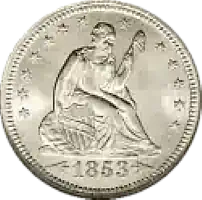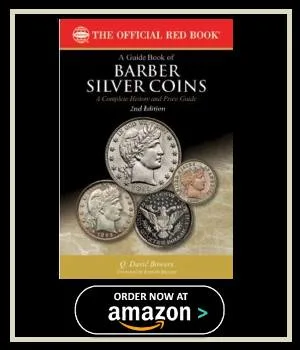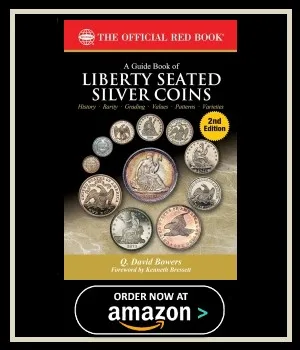
United States Dime Coin: A Legacy of American Currency
The Coinage Act of 1792 significantly shaped America’s monetary system. This pivotal legislation passed through the United States Congress. It established various U.S. currency denominations. Among these, Congress authorized the dime. The act defined this coin as a “disme,” an archaic spelling of “dime.” Its primary characteristic was simple: it weighed and valued one-tenth of a dollar. The U.S. Mint, still in its early stages, began producing these new coins. They followed the specific guidelines outlined in the Coinage Act. The “disme” became a coin of value. Its production marked a vital step toward creating a reliable currency system in the United States.
The Foundational Coinage Act of 1792
The Coinage Act of 1792 served as a cornerstone for American numismatics. Congress passed this essential law to standardize the nation’s money. Prior to this, various foreign coins circulated widely. This created confusion and inefficiencies in commerce. The act, therefore, provided a much-needed framework. It defined the metallic composition of coins. Furthermore, it set their weights and values. For instance, it stipulated that the U.S. monetary unit would be the dollar.
A crucial aspect of the act involved adopting a bimetallic standard. This meant both gold and silver would back the currency. The ratio between them was fixed. Moreover, the act established the U.S. Mint in Philadelphia. It gave the Mint sole authority to produce federal coinage. This centralized control ensured consistency and prevented counterfeiting. Consequently, the act laid the groundwork for a stable and uniform national currency. This was vital for economic growth and stability.
The “Disme” and Its Specifications
Within the Coinage Act, Congress specifically authorized the “disme.” This coin would represent one-tenth of a dollar. Early drafts even considered it as a silver coin. Its weight was set at 27 grains of silver, with a small percentage of copper. The Mint produced a few experimental “disme” patterns in 1792. These initial pieces are exceedingly rare today. They offer a tangible link to the very beginnings of American coinage. Thus, the dime’s journey began under precise legal stipulations.
From Flowing Hair to Capped Bust (1796-1837)
The first circulating dime, known as the **Flowing Hair Dime**, appeared in 1796. Robert Scot, the Mint’s chief engraver, designed it. This coin featured Lady Liberty with unbound hair. However, this design was short-lived. The **Draped Bust Dime** soon replaced it in 1796. This design presented a more refined portrayal of Liberty with draped attire. Production continued through 1807. These early silver dimes are highly prized by collectors today due to their rarity and historical significance.
Subsequently, the **Capped Bust Dime** emerged in 1809. John Reich created this design. It depicted Liberty wearing a cap, symbolizing freedom. This series saw several minor modifications over its production run. Minting continued until 1837. These early designs reflect the artistic styles and national symbols popular during the young republic’s formative years. For instance, small changes in the cap or bust details distinguish different varieties. Collectors find these early U.S. dimes fascinating due to their intricate history.
Seated Liberty and Barber Dimes (1837-1916)
In 1837, the **Seated Liberty Dime** became the standard. Christian Gobrecht designed this iconic coin. It featured Liberty seated on a rock, holding a shield and pole. This design proved remarkably enduring. The Mint produced it for over half a century, through 1891. Many variations exist within this long series. These include arrows at the date or the addition of a motto. Therefore, collectors often specialize in specific Seated Liberty subtypes. Its widespread circulation cemented the dime’s place in American commerce.
The **Barber Dime** followed the Seated Liberty series in 1892. Charles E. Barber, the Mint’s chief engraver, created its classical design. This coin showcased a classical interpretation of Liberty’s head. It circulated until 1916. Nevertheless, it marked the transition to a new artistic era for U.S. coinage. Collectors value Barber dimes for their intricate details and historical context. Thus, the early 20th century brought new aesthetics to this small coin.
Iconic Twentieth-Century Dimes (1916-Present)
One of the most beloved dime designs, the **Mercury Dime**, debuted in 1916. Officially known as the Winged Liberty Head dime, Adolph A. Weinman designed it. Its striking imagery of Liberty wearing a winged cap captivated the public. As a result, it quickly became a collector favorite. The Mercury dime remained in production through 1945. It represents a period of significant change and optimism in American history.
Finally, in 1946, the Mint introduced the **Roosevelt Dime**. This coin honors President Franklin D. Roosevelt after his passing. John R. Sinnock designed it. The coin depicts President Roosevelt’s profile on the obverse. The reverse shows a torch, olive branch, and oak branch, symbolizing liberty, peace, and strength. This design has endured for decades. Consequently, it is the longest-running dime series. Millions of Roosevelt dimes have been minted. They remain a familiar part of everyday American commerce. Furthermore, modern collectors seek out proof sets and special mint issues.
Understanding Dime Specifications and Collecting
The dime’s composition has evolved significantly over time. Early dimes consisted of 89.24% silver and 10.76% copper. Later silver dimes increased their silver content to 90%. However, a major change occurred in 1965. Rising silver prices prompted the U.S. Mint to transition to a clad composition. Modern dimes now feature a copper core bonded between two layers of cupronickel. Specifically, this composition is 75% copper and 25% nickel. This creates a distinctive sandwich-like appearance. This shift affected quarters and half dollars too.
In terms of size, the dime has maintained a consistent diameter. Currently, it measures 17.91 millimeters (0.705 inches) across. Its thickness is 1.35 millimeters (0.053 inches). Despite its small size, it plays a vital role in daily transactions. Interestingly, its compact form can sometimes make older, less common dates harder to find. Furthermore, its reeded edge, featuring 118 reeds, helps distinguish it by touch. This design element also deterred “clipping” of precious metal from earlier silver coins. Therefore, the dime’s specifications combine historical tradition with practical utility.
Tips for Collecting Dimes
Collecting dimes offers a rewarding hobby for both beginners and experienced numismatists. A dime’s value depends on several factors. These include its condition, rarity, mint mark, and historical significance. For example, a rare 1916-D Mercury dime in good condition can fetch thousands of dollars. Conversely, a common Roosevelt dime from recent years might only be worth its face value. Therefore, understanding grading standards is crucial. Professional grading services provide objective assessments. Consequently, a higher grade usually translates to a higher price.
Many collectors specialize in specific dime series. Some pursue early silver issues, others focus on proof sets. Conversely, some aim to collect a “type set,” featuring one example of each major design. Joining local coin clubs and participating in online forums offers valuable resources. You can learn from experienced numismatists. Additionally, consulting reputable coin catalogs and price guides is essential. This helps you make informed purchasing and selling decisions. Ultimately, continuous research and networking enhance the collecting experience. The United States dime, though small, presents a rich tapestry of history and collecting potential.
The first dime design to be minted under the provisions of the Coinage Act of 1792 was the Draped Bust Dime. Designed by the talented Robert Scot, this dime design was minted from 1796 to 1807. It featured a classic and elegant depiction of Lady Liberty on the obverse (the front side) and a majestic eagle on the reverse (the back side). The Draped Bust Dime is a numismatic treasure, embodying the artistic and historical essence of the era in which it was produced.
The Draped Bust Dime design, with its portrayal of Lady Liberty, is a reflection of the prevailing ideals and aesthetics of the early United States. Lady Liberty, draped in a flowing gown, symbolized the spirit and freedom of the new nation. The eagle on the reverse, a powerful and enduring symbol, represented the United States’ strength and aspiration to soar to greater heights. This design not only captured the essence of the time but also set a standard for the artistic representation of American values on coinage.












 '
' 




